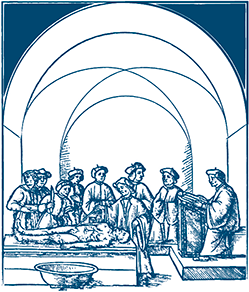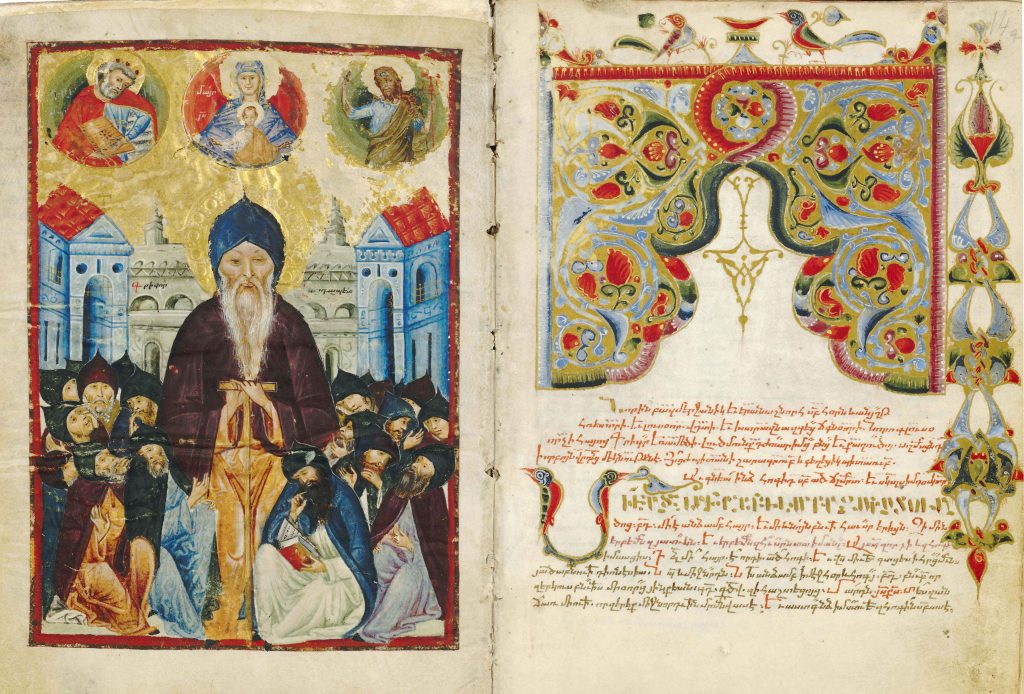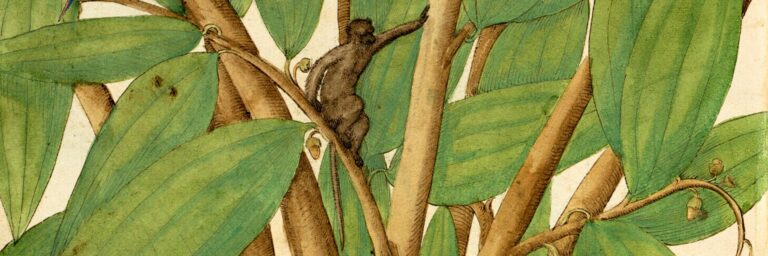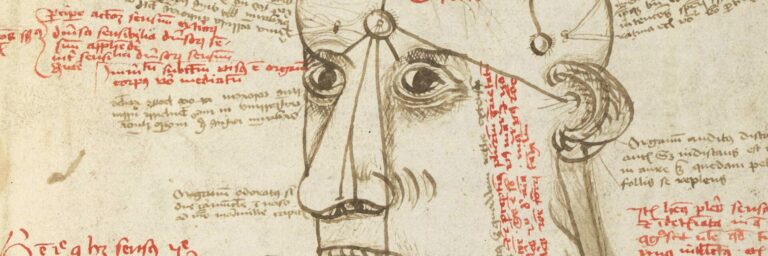Medieval Armenian Medicine


FORMA FLUENS
Histories of the Microcosm
Medieval Armenian Medicine
A Short Historical Outline
Viktorya Vasilyan
National Academia of Sciences of Armenia

Adam was the “first master and teacher of philosophy (primus philosophiae magister et doctor)”. […] Adam received wisdom from God and transmitted it to his descendants; the Holy Fathers, exiled in Egypt, taught it to the Armenians and Egyptians, and numerous Greeks poured […] attracted by the desire for knowledge; finally it came “through all parts of the earth and corners of the world and places dispersed far and wide…”[1]
In the words of the seventeenth-century churchman Enricus Gislonis Spinerus (1624-1671), Armenia was one of the first countries to be ‘enlightened’ by divine knowledge, which included medical knowledge. The roots of Armenian medicine can be traced back more than 3,000 years, branching out from indigenous practices and the collective expertise of generations of physicians who studied the healing properties of the local flora, fauna and minerals.
Mkhitar Heratsi, a 12th-century Armenian physician [Fig. 1], is generally regarded as the father of Armenian medicine, where he holds the same position as Hippocrates for the Greeks, Galen for the Romans, and Ibn Sina for the Islamic world at large.
He wrote several medical works including On the Structure and the Creation of the Eye, On Hernia, On Precious Stones, Predictions of Storms and Earthquakes. Of particular importance is the work On the Structure and the Creation of the Eye wherein Heratsi describes seven membranes of the eye, six muscles, and a pair of optic nerves. Like Galen, he believed that the lens played an important role in the process of seeing. His works on pharmacology and pathology were long thought to be lost. Recently, however, scholars have proved that important parts of them were included in works that have survived in full, such as the Gagik-Hetumian Medical Book [2] and Relief of Fevers, the latter of which, written in 1184 and addressed specifically to physicians, is considered Heratsi’s masterpiece.
Relief of Fevers is an encyclopaedic work dealing with surgery, diet and psychotherapy. It was the first work to indicate moulds as a living factor responsible for the onset of fever. Because of this, in traditional historical accounts of medicine, the work has been seen as anticipating similar theories by Girolamo Fracastoro (1478-1553), if not the discovery of microorganisms in the nineteenth century. The theory had many followers and, in keeping with Heratsi’s legacy, Armenian physicians included in the group of fevers caused by moulds (also known as moldy fevers) the so-called six-day fever, now identified as familial Mediterranean fever or Armenian disease.[3]
Heratsi proposed a classification of fevers into three categories: one-day fevers, mouldy fevers and wasting or consumptive fevers. Since one-day fevers do not easily fit within the boundaries of traditional humoral pathology, the classification seems to be suggested by intuitive or practical criteria. To explain their genesis, Heratsi referred to ancient theories such as the pneumatic theory, according to which changes in the ambient air can act as a pathogenic cause, either facilitating or directly causing the spread of a particular disease. Experienced physicians – Heratsi argued – should not overlook the unusual features that manifest themselves in patients affected by one-day fevers, and some scholars suggest that Heratsi may have had in mind several types of allergies caused by physical, “chemical” and dietary factors that can manifest themselves in one-day fevers.
Among the mouldy fevers, Heratsi seems to have included a number of infectious diseases that were common in the Middle Ages, such as malaria, typhoid, septicemia, plague, smallpox and measles. He identified at least three types of malaria, which he classified as quotidian (one day), tertian (alternate days, i.e. every three days) and quartan (three days apart) fevers.
The third group, the wasting or consumptive fevers, included various forms of tuberculosis. According to Heratsi, these fevers could be triggered by three types of causes, namely:
-
-
- emotional stress and anxiety;
- exhaustion, overwork, and malnutrition;
- unfavourable climatic conditions.
-
To diagnose wasting or consumptive fevers, Heratsi used methods such as ‘observation’ (looking), ‘palpation’ (feeling with the hands), ‘percussion’ (tapping with a finger) and ‘auscultation’ (listening), together with uroscopy and organoleptic inspection of mucous and other discharges. Anamnesis, or the recollection of the patient’s past medical history, also figured prominently in Heratsi’s methods. Therapy included the use of plant extracts, regulation of diet, physical exercise, hydrotherapy and psychotherapy, especially listening to music.[4]
Hydrotherapy included showers and baths, as well as the use of cold sponges and gymnastics. Since one-day fevers were caused by ‘sorrow and bitter anxiety’, Heratsi strongly recommended to:
[a]muse <the patient> with games and jokes and in every way possible, make him happy. The patient should <thus> listen to the songs of minstrels (gusans) as much as he can, to the sounds of strings and delightful melodies.[5]
Echoing Hippocrates, he advised physicians to consider the patient as an individual, taking into account the course of the disease, which he divided into four stages of intensity, used especially in prognosis to assess the severity of diseases. The prognosis is a key element in Heratsi’s approach, not only in deciding the appropriate treatment, but also in saving the patient’s life. Treatment, on the other hand, followed the Hippocratic motto contraria contrariis curantur – diseases are cured by that which opposes them.
It is noteworthy that in the treatment of infectious-allergic diseases, herbs with antibacterial, anti-inflammatory and anti-allergic properties seem to be preferred. As an example, in Relief of Fevers we find the following herbs used in compound preparations: water lily, violet, iris mullein, hyssop, inula, mugwort, plantain, liquorice root, meadow saffron, caper, mint, caltrops and thyme. In addition to herbs, these recipes also contain animal drugs (e.g. castoreum, ox bile) and mineral ingredients (e.g. Armenian clay, sulphur, zinc, boric acid) with tonic, antisclerotic and antitoxic properties.
Long-term patients, on the other hand, were advised to eat easily digestible food such as fresh fish, chicken, meat broth, egg yolk, milk (goat and donkey milk were recommended for tuberculosis patients), seasoned with coriander, basil, celery, okra, purslane and supplemented with fruits such as pomegranate, quince, grapes, oleaster, figs and jujube plums.
Following in the footsteps of Albert the Great’s Compendium theologicae veritatis, Grigor of Tatev dealt with physiognomy and offered a critical examination. In response to the question Are external features true? <that is>, Do they really express a person’s character? he stated:
Viktorya Vasilyan (1989) is an archaeologist and art historian at the Institute of Archaeology and Ethnography of the National Academia of Sciences of Armenia. She received her PhD in 2018 with a dissertation on Women’s Iconography in the Ancient and Classical Periods of the Armenian Highlands. Since 2012 she has worked at the Yerevan State University, the American University of Armenia and the Traditional Medicine University of Armenia. She is currently project manager of the 100 Archaeological Monuments of Armenia project (https://ama100.am/en) and Goodwill Ambassador for Peace, Human Rights and Humanity IHRO-Republic of Armenia.
We can say that they are not true for the following five reasons. First, such features are not the defining characteristics of man, they <only> show that nature has certain tendencies. Secondly, they vary in degree and are sometimes even similar in all men. Thirdly, they can be suppressed, if desired, by the use of the faculties of the mind. Fourth, these characteristics are often accidental and not at all natural. Fifthly, man can, contrary to his habits and by means of abstinence, prayer or control over his body, suppress himself and not manifest these qualities. From all this it can be deduced that we must not think badly of a person if such characteristics are noticed in him. [6]
The 13th and 14th centuries saw a marked increase in the activity of Armenian scholars. During this period, several medical and natural philosophical works by European scholars were translated from Latin into Armenian. These included works by Albert the Great (1193-1280) and Roger Bacon (1220-1292), as well as the theological and natural philosophical works of Thomas Aquinas (1225-1274). Together, they had a decisive influence on the development of Armenian scholarship, as illustrated by the Book of Questions written by the Armenian philosopher and theologian Grigor of Tatev (Grigor Tatevatsi, 1346-1409) [Fig. 2]. Written in 1389, the treatise expounded the author’s ideas on human anatomy, biology, psychology and embryology, expressed in accordance with the various European leading authorities of the time.
Figure 2
Captions:
Fig. 1: Nerses Shnorhali and Mkhitar Heratsi. Yerevan, Mashtots Matenadaran, Ms. 7046, 1644, f. 343v
Fig, 2: Grigor Tatevatsi with his disciples. Yerevan, Mashtots Matenadaran, Ms. 1203, 1449, ff. 14b-c.
Fig. 3: Amirdovlat Amasiatsi, Anatomical man. Yerevan, Mashtots Matenadaran, Ms. 414, 1626, f. 427a.
Amirdovlat Amasiatsi, a 15th-century oculist and surgeon [Fig. 3], is another interesting case demonstrating the influence of European science on the development of Armenian medicine. [7] He is the author of several books on medicine, mostly on pharmacology. Amiatsi described over 250 diseases affecting organ systems such as the heart, blood vessels, respiratory system, digestive system, urinary and genital organs, and central nervous system.[8] Their treatment was based on herbs, all of which are native to Armenia, such as cow parsnip, inula, chamomile, mugwort, hyssop, thyme, sweet flag, black cumin, caltrops and pearl plant. They are rich in essential oils, vitamins, phytohormones and other substances that are responsible for their healing properties.
Amasiatsi also attached great importance to herbs with anti-toxic (e.g. lavender, marigold, ironwort) and toning (e.g. birthwort, snake bryony) properties. Most of these plants were used to prevent premature ageing and to maintain good health and vitality. For the same purpose, Amasiatsi also used some gums of plant, animal and inorganic origin (galbanum, sagapenum, assa-foetida, propolis, mumia, etc.).
Because of his careful selection of herbs and extracts, Amasiatsi is considered the founder of Armenian pharmacology. In many ways, his work parallels Ibn Sina’s Canon in that it systematises almost all branches of medicine, from embryology to surgery and therapy. For this very reason, it has served for centuries as a medical encyclopaedia and a model for subsequent generations of physicians.
In its historical development, Armenian medicine has been closer to Eastern (i.e. Greek, Arabic, Persian) traditions than to Western ones, although it was later able to assimilate the teachings and practices of the latter as well.
Heratsi’s medical training, which is said to have been influenced by the Cilician medical schools, provides a good example of this. In the preface to Relief of Fevers, he tells us about the state of Armenian medicine at the time of his studies, claiming that he had been a follower of wisdom and the art of medicine since childhood, and that he had assimilated Arabic, Persian and Greek philosophy. By reading works in these languages, he realised how to master the perfect art of medicine and, in particular, prognosis, which he saw as the true essence of medicine. It’s much more important, he argued, to prevent the causes that make organisms susceptible to disease than to cure them once they have manifested themselves in the body. [9]
By and large, Armenian practitioners were itinerant doctors, keen to experiment with local herbs and remedies, and their approach eventually influenced traditional medicine. In this sense, perhaps the greatest strength of Armenian medicine has been its ability to combine and synthesise different traditions into valuable practices, many of which, from a modern scientific point of view, appear highly effective in treating symptoms of a wide range of diseases, from allergy to mental illness. In Armenia, many of these remedies are being rediscovered and put to the test in practical treatment.
As East and West rediscover their common roots, it is hoped that the study of the therapeutic value of natural remedies can still inspire us to use production techniques that reflect a shared and rich medical heritage for a more sustainable future.










